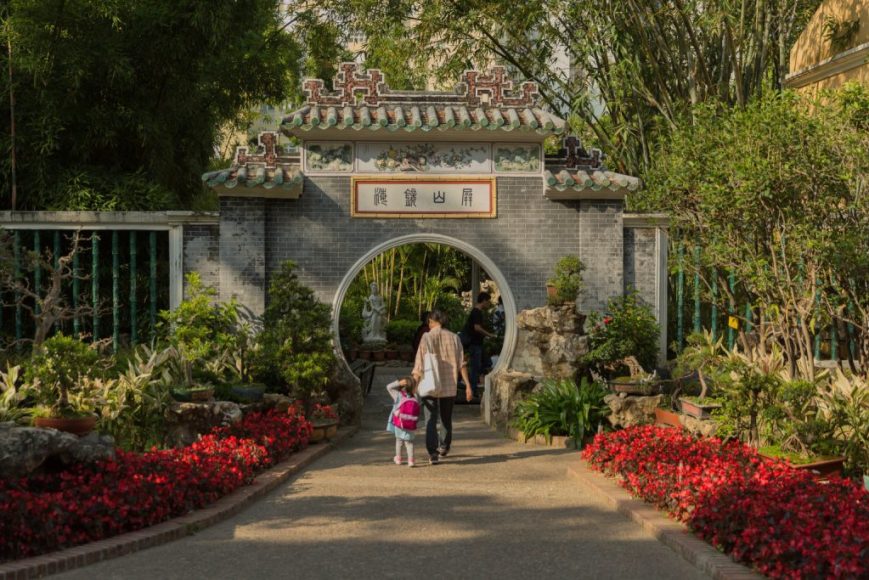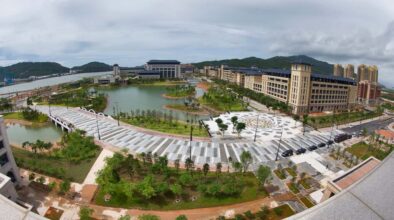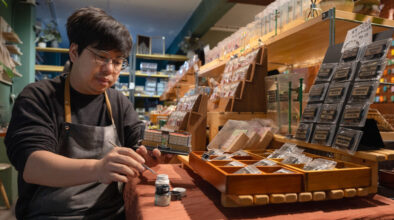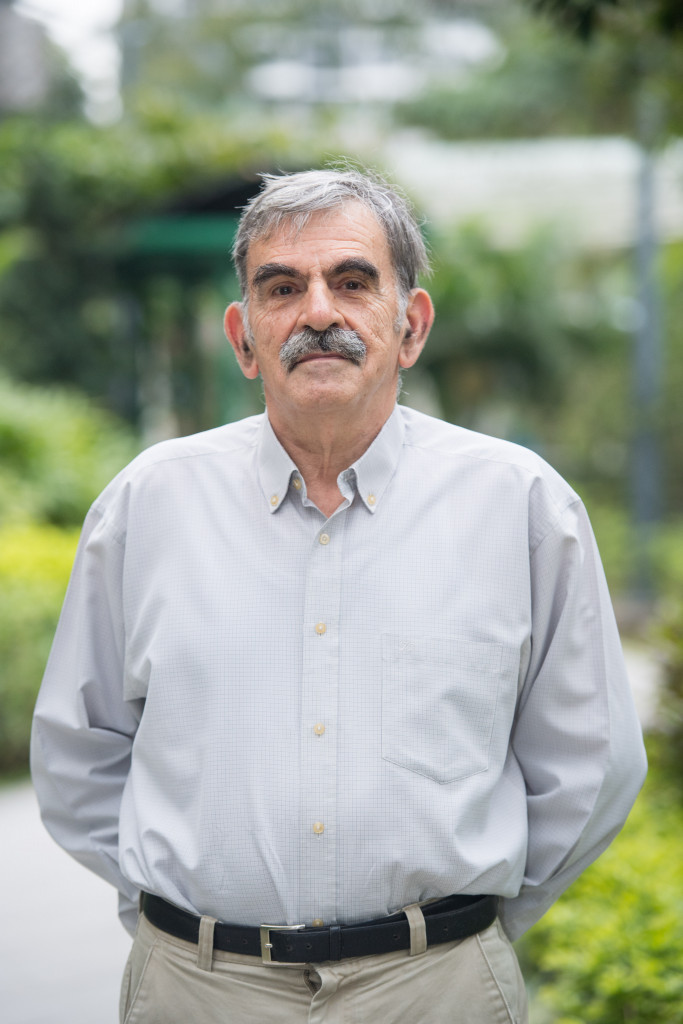
For such a compact city, Macao is home to an impressive collection of 44 parks and gardens, covering almost ten per cent of the land area. These lush, green outdoor spaces humanise the hard‐edge result of urbanisation, and provide a near‐natural environment for people of all ages to enjoy a moment of tranquillity. But to landscape architect António Saraiva, the parks and gardens in Macao are more than just an escape from the bustle of city life.
Saraiva was head of Garden Department and Green Zones Department since 1985, until he became an advisor to Civic and Municipal Affairs Bureau (IACM) in 1998,a position he would hold for the next six years. Saraiva has spent decades studying, observing, and caring for the green areas of Macao. He turned his findings and experience into an academic journal article, Os Jardins e a história de Macau (2000) on the history of gardens in the city, and books including Jardins e Parques de Macau (Gardens and Parks of Macau), published in 1993, Principles of Landscape Architecture and Territorial Planning (2005) and Trees and Large Shrubs of Macau (2017).
With his expert guidance, we explore these precious leisure spaces, from those now revered as part of the city’s heritage to the more recent additions that mark its modernisation process.
The green movement
Some of the oldest gardens in Macao were kept private for years, serving a different purpose before the then Portuguese administration opened them to public.
“It was also an idea to improve the living standard, as more and more people moved to the city and worsened the environment,” Saraiva explained.
According to him, it was an evolution that happened not only in Macao but also in Europe during the mid‐19th century. “At that time, doctors and social reformers started to propose a number of measures to improve the living condition of the citizens, such as providing more green area for the people.”
Already well designed with rich vegetation, the historic Sao Francisco Garden, Camões Garden, and the Flora Garden became ready solutions for increasing recreational space.
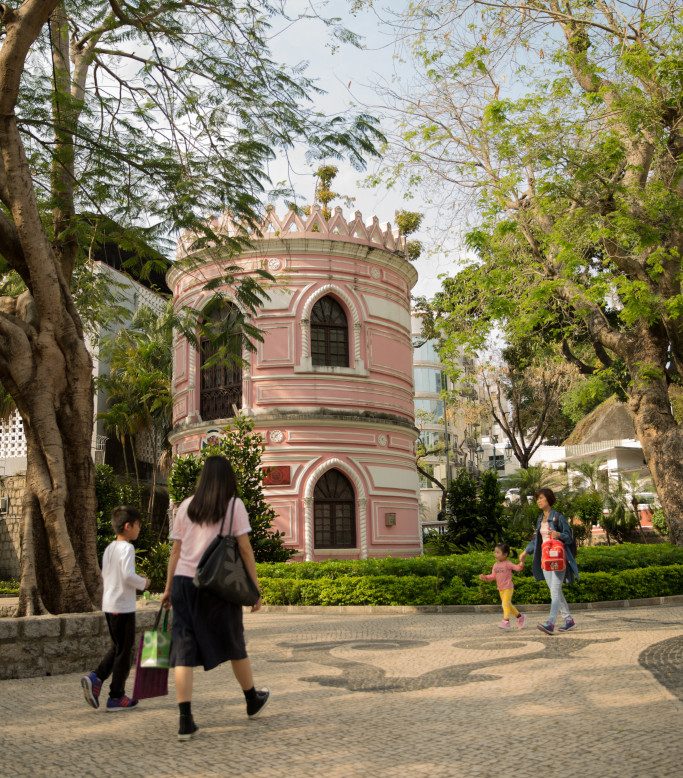
São Francisco Garden
Imagine a time when the thoroughfare below the São Francisco Garden was just open water and people would gather at the garden’s lower platform overlooking the sea or hang around the bandstand to enjoy a musical performance.
“The São Francisco Garden was the first public garden in Macao; it has a history of more than 400 years,” said Saraiva. Constructed by the Catholic Franciscan order in the 16th century, it served as a religious base that provided temporary residence for Spanish Franciscan missionaries in China. Following the expulsion of the Franciscan order by a religious edict from the King of Portugal in 1834, the religious complex was transformed into the São Francisco Garden upon order of the then Portuguese administration.
Throughout the years, the garden has been impacted by the wave of modernisation. In the 1920s, Rua de Sta Clara was built right through the garden and its iconic bandstand was demolished, a significant change that Saraiva described as “a pity.” Yet the garden still managed to retain much of its character with the historic pink arches and the giant shade trees.
Camões Garden
Surrounded by neighbourhood, the verdant Camões Garden provides a perfect place for recreational activities. Elderly people practice tai chi and Cantonese opera at its spacious square while children run up and down the spiral stairways under the watchful eyes of their parents.
The joyous ambiance is a far cry from what the famous Portuguese poet Luís de Camões endured some 400 years ago: exiled to Macao, he took refuge in a grotto within the garden, then a desolate forested area. The grotto is believed to be where he finished the national epic Os Lusíadas.
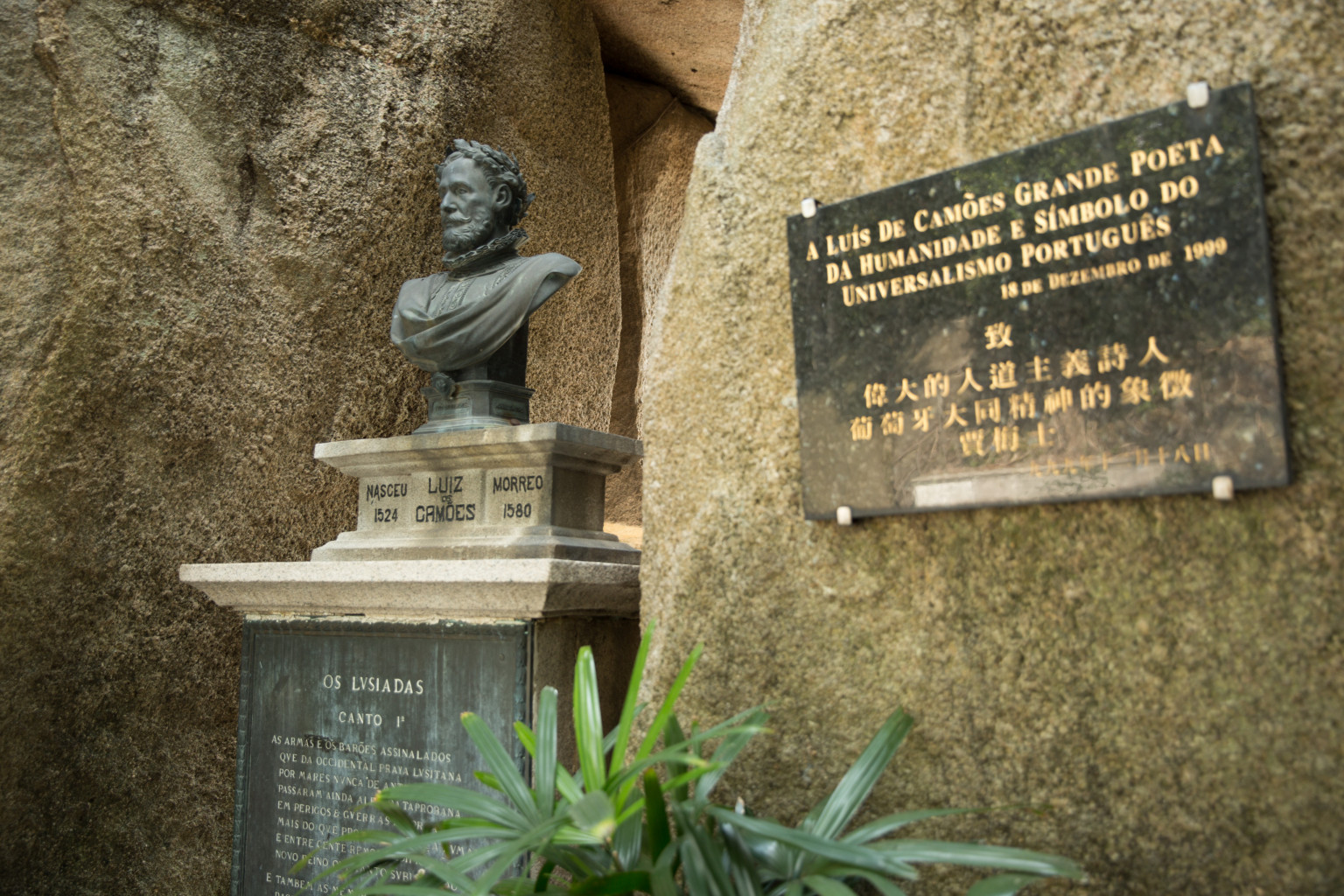

The area was later transformed into private property by a Portuguese merchant, and was leased to the British East India Company during the 18th century. The company improved the garden and turned part of its area into a nursery for Southeast Asian plants to be transported to Kew Gardens in England. In 1885, the property was sold to the Portuguese administration at 30,000 patacas, according to Saraiva, and became the second public garden in Macao.
Today, Camões Garden is home to the memorabilia of various historical figures, including a bronze bust of Luís de Camões installed in the grotto in 1886. Another bronze piece, a statue of Korean Catholic saint Andrew Kim Taegon gifted by the Korean Church to Macao’s Catholic community, was installed in a corner of the garden in remembrance of his preparation for priesthood in Macao in 19th century.
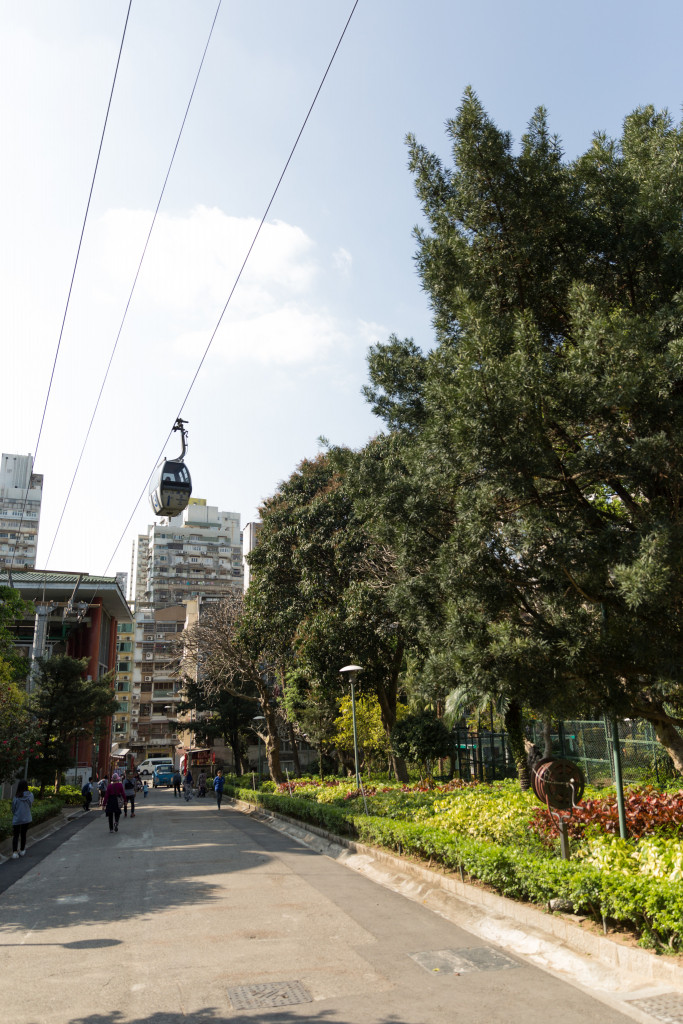
Guia Hill and Flora Garden
“Take a look at the old photos and you will find that the hilltop where the lighthouse stood was almost barren without trees,” António Saraiva noted. It was the original outlook of the now greener Guia Hill, a formal military base built with fortress in 1638 and centuries later, a system of tunnels in 1925. In the 19th century, the Portuguese administration of Macao decided to afforest the Guia Hill in order to provide more green space for the citizens. According to Saraiva, the plan was made possible by fertilising the soil in the area with organic waste from the city and manure from oxen.
The first afforestation took place between 1883 and 1886, with the Chinese pine (Pinus massoniana) as the major plant, but with the passage of time, the pines were replaced by other species, said Saraiva.
Situated at the base of Guia Hill, the European‐style Flora Garden occupies the former grounds of the Flora Palace, the aristocratic mansion residence of the Portuguese Governor Tomás de Sousa e Rosa. Famous for having a variety of tall palms and flowering shrubs, the garden was opened to the public after the governor moved out of the mansion in the 1930s, following an explosion of a nearby arsenal that blew up the mansion.
Flora Garden is now known for its cable car built in 1997, which travels a short distance of 186 metres up Guia Hill, and the zoo, home to the beloved Asiatic black bear Bobo.
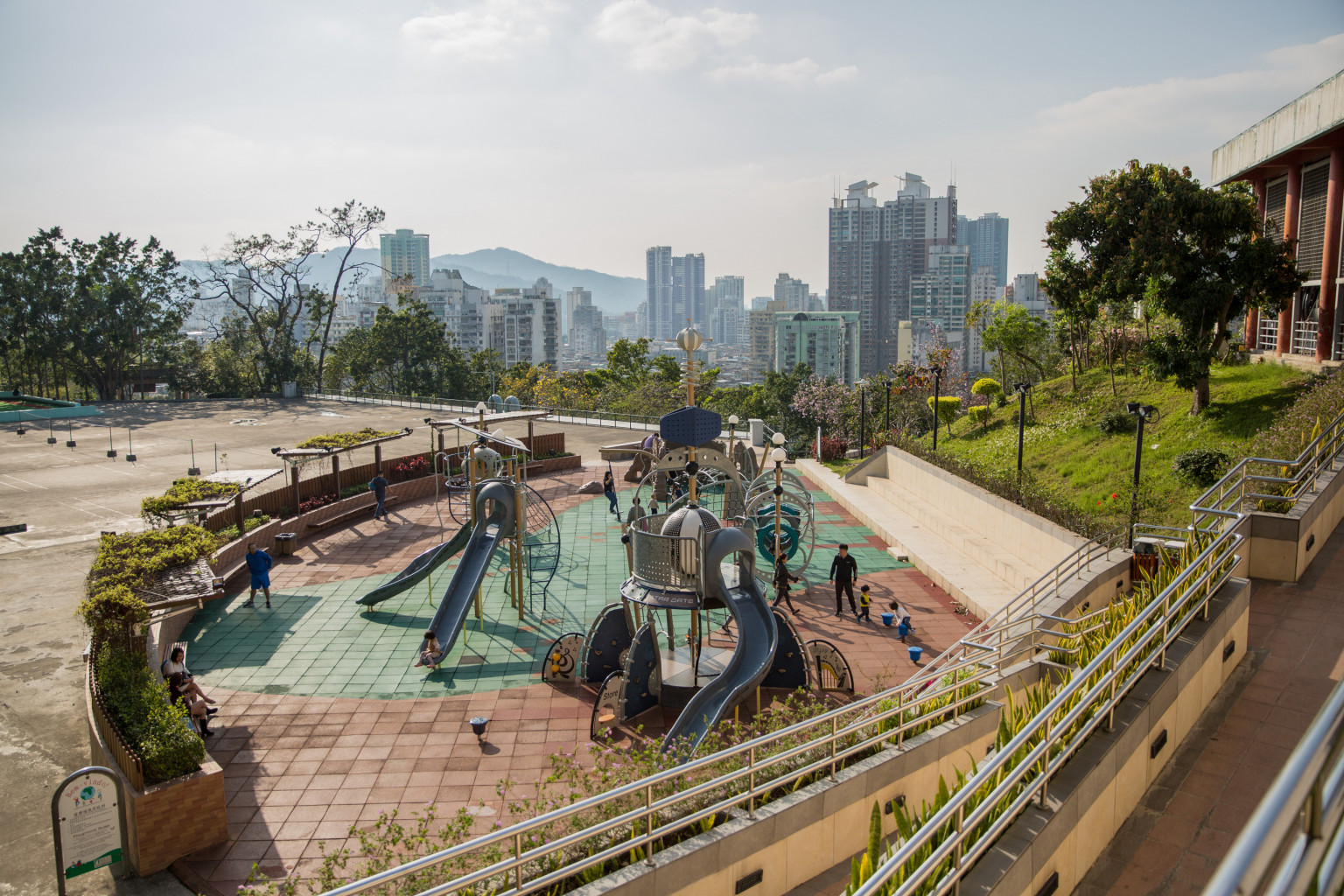
A rare touch of China
To Saraiva, the garden in China is a form of art, embodying Chinese cultural symbolism which may easily be overlooked by Westerners. In the past, Chinese gardens, often encompassed by high walls, were private spaces surrounding aristocratic mansions. Rocks and water, moon doors and winding paths are the most distinguishing features of a Chinese garden.
The Lou Lim Ieoc Garden, situated in the centre of the Macao Peninsula, has best exemplified the special characteristic of a Chinese garden.
Lou Lim Ieoc Garden
“It is the only Chinese garden in Macao, and it is also my favourite garden,” Saraiva smiled. “Here, you can find the quaint moon gate, shady walkways, man‐made hills, ponds, trees, and shrubs. They form a variety of picturesque landscapes, but still present a strong atmosphere of togetherness.”
Inspired by the famous Chinese novel Dream of the Red Chamber, Lou Lim Ieoc Garden was once a mansion belonging to the wealthiest man in town, Lou Kau. The construction of the garden was a large‐scale project that began in around 1904 and completed decades later in 1925.

Though widely regarded as a garden in traditional Suzhou style, according to Saraiva, the garden exhibits unique elements such as the aptly‐named Bridge of Nine Curves, with its wavy structure instead of the typical straight segments, or the porch columns of the Spring Grass Pavilion, curiously similar to the Ionic order.
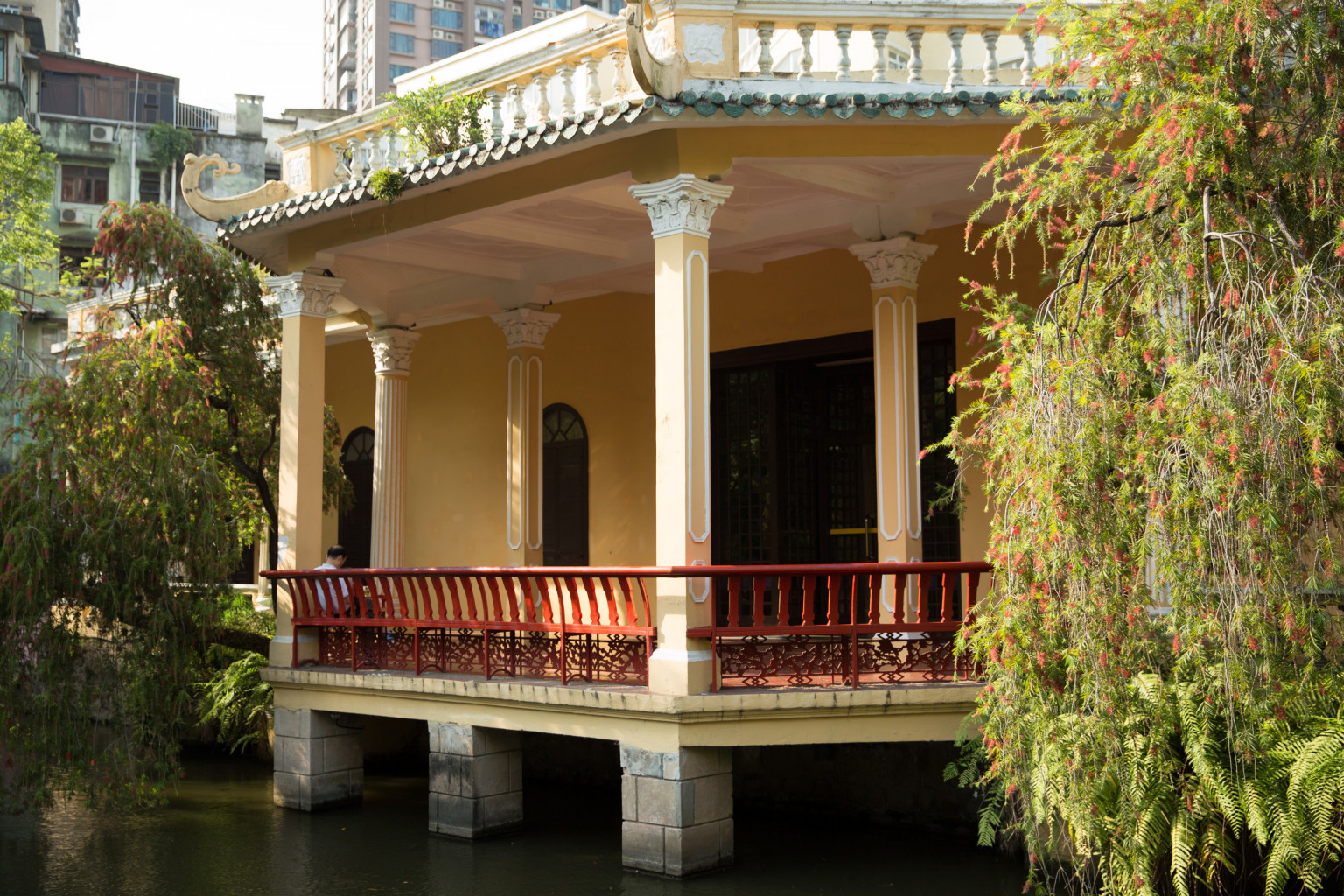
Following the decline of the Lou’s family, the private house within the garden was reconstructed into Pui Ching Middle School in 1938, and the western part was sold for real estate. The remaining area, where the Spring Grass Pavilion situated, was purchased by the Portuguese administration in 1973, and opened to the public the next year. Lou Lim Ieoc Garden is now a UNESCO heritage site, offering curious visitors a scenic journey into the past.
From garbage field to wonderland
Little is known about the connection between the rise of modern gardens in Macao and the major developments that took place in the last century. The expansion and redevelopment of Macao was made necessary due to the large influx of newcomers since the late 70s. As a result, said Saraiva, new parks in the city are required to adopt a modern style, which is less formal, and to provide more space for recreational activities to cater to the surging population. The first modern parks were Hac Sa Park and Seac Pai Van Park, both completed in 1985 with recreational facilities such as swimming pools, tennis courts, plazas, and playgrounds.
However, to Saraiva, Dr Sun Yat Sen Municipal Park, which covers an area of around 52,000 square metres, is the defining project attesting to the modernisation of Macao’s gardens. After assuming office in the garden department in 1985, Saraiva oversaw the construction of the park, until it opened to the public in 1990.
Dr Sun Yat Sen Municipal Park
“We had never stopped worrying throughout the construction of the park,” smiled the 73‐year‐old, stressing that the park, situated at the northern end of the city, was originally a landfill site for garbage disposal. “The leachate and methane coming from the degraded waste might damage the newly planted trees.”
But the trees managed to thrive under the less‐than‐ ‐perfect conditions. On 24 June 1990, the urban park welcomed its first batch of visitors with a Victorian‐style greenhouse, winding walkways, flower gardens and a big lake with a waterfall. It was also the first park in Macao to install an automatic irrigation system, and the first area to be paved with Portuguese cobblestones.
It is a day that António Saraiva will always revisit. “It was a very hot summer day, and some children jumped into the lake to cool off,” he recalled. “That’s how I came up with an idea to build a swimming pool inside the park.” The pool was added to the park seven years later, its irregular shape designed to fit into the surrounding area.
Saraiva also told the story behind the naming of the park: “Originally, it was called Parque do Canal dos Patos (Duck’s Channel Park), since the park was built along a river channel inhabited by a lot of wild ducks.” But just a few months after the opening of the park, a statue of Sun Yat‐sen was gifted to Macao by an institute in China.
“The plan was to install it in Lou Lim Ieoc Garden, which would not have gone well in terms of style. So I suggested placing the statue at Parque do Canal dos Patos, and since then, it was renamed as Dr Sun Yat Sen Municipal Park.”
An on‐going evolution
As urbanisation continues to transform Macao’s cityscape, to fully utilise the scarce urban spaces, new parks are often built with multiple functions. Taipa Central Park, opened in 2015, is a perfect example as a recreational complex with a swimming pool, library, fitness equipment, football and basketball field, as well as a children’s playground. A parking lot was built below the park to address the growing demand for car parks in the neighbourhood.
The waterfront of Macao also provides valuable space for redevelopment. In 2013, the IACM, which oversees the Department of Gardens and Green Areas, kicked off a six‐phase construction project on the leisure area of Taipa Waterfront, with an aim to green up the city and encourage a more active lifestyle within the community.
The first three phases run along the waterfront of Avenida dos Jogos da Ásia Oriental, Rotunda dos Jogos da Ásia Oriental and Avenida do Oceano in Taipa. With a total length of 3,250 metres, the waterfront promenade provides a variety of recreational facilities, including a jogging track, cycle track, children’s playground, and other fitness facilities. Bicycle rental service with two rental locations is also available in the leisure area.

The fourth and fifth phases will soon kick off with plans to connect the first phase (near the Avenida dos Jogos da Ásia Oriental) with the 1,100‐metre Lotus Cycling Track, opened in 2010 and situated along the waterfront near Broadway Macau. The sixth phase, meanwhile, aims to expand the Lotus Cycling Track further south towards Coloane by 600 metres.
Upon completion, they will offer a seamless 6,000‐metre coastal promenade for locals and tourists to enjoy sea views and the shade of green trees. “It’s important to reserve some open space within the community, where our future generations can continue to enjoy the freedom to explore and run around in close proximity with nature,” Saraiva emphasised. “Let us not forget that we are not machines; we are a part of nature – to be separated from nature is not good for our mind or our body.”
Saraiva concluded the garden tour by leading us to a mini farm built by a local school, where students can learn how to grow vegetables. “Gardens can be in any form, as long as they help us reconnect with nature. People can live without cars or cinemas, but not without trees.”
